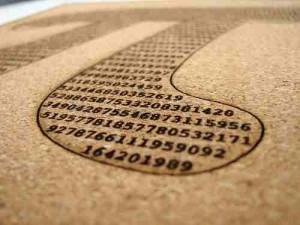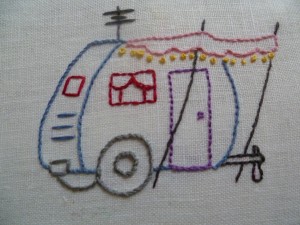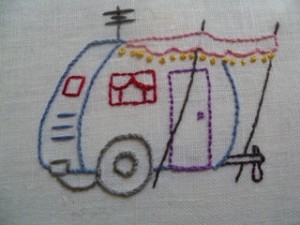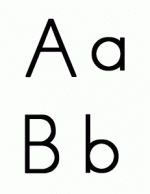April 12th – 18th
8 hours – reading Neuro , The Magic Mirror of M.C. Escher, Dali, The Fractal Geometry of Nature, The Notebooks of Leornardo
2 1/2 hours – watching From Zero to Infinity: A History of Numbers
5 hours – observing at Olympia Waldorf School and interview with Tim Morrissey
30 min – online interview with Anita Lenges
4 hours – Calculated Poetics
In perhaps the busiest week of my life, I unearthed some startling revelations of the connection to our origins of numbers, the origins of modern math systems, and where they intersect as intuitive math manifests itself in the application of modern math class in a group of 10 year olds at the Olympia Waldorf School. I’ll begin with the interview and sit in with the 4th grade class at Waldorf that I attended on Friday. By recommendation of a friend, I found myself in contact with Tim Morrissey who got his masters in Mechanical Engineering at M.I.T. and worked as a Software Engineer, Environmental Consultant and Hazardous Waste Specialist, before beginning a farm in Olympia, which eventually led him to teach at Waldorf starting in 2005. He invited me in to observe the classroom and fit in time for questions between activities. I arrived at 7:45 Friday morning, him orienting me on the day’s progressions before joining with the morning greeting and assembly. I then sat and watched as he began a morning lecture reviewing the 3 day field trip they had just returned from on Whidbey Island for a potlatch hosted by the 4th graders at that Waldorf School. They then began writing ‘thank yous’ to special persons involved that made the trip wonderful. I offered help or advice when I could as they scrawled in cursive across their custom cut pieces of paper. They declared what animal tribe they were apart of, what its characteristics are, and how they will embody those characteristics as they return to their daily lives.
Mr. Morrisey then transitioned to the next activity by presenting a few math problems on the board. After working silently for some time, he then took answers from the audience, allowing others to jump him to help solve a part of the problem. The problem had something to do with dividing a group of 145 students into 7 groups of somewhat equal numbers as best they could (without dividing any students in half!). We then increased the number to 1325 students! Mr. Morrissey encouraged the students that “there are many paths to take to get to the right answer, all that matters is that you can get there.” At the conclusion of the exercise, he offered me a wink since I had come in on a day when they were not focusing on math when that was my focus.
During snack time, we sat down in the back and I asked him some questions. I began by asking him how old he was when he realized he loved numbers. He remembered having an affinity for them before even really having an idea of what it was; stacking legos, ordering things like toys in different arrangements (4s and 5s). His dad noticed his precocious number sense and then supported it by intellectualizing it, introducing formal math equations and problems, teaching him the rhetoric of the ivory tower elite. He said that probably his formal realization of his love of numbers came in high school with a teacher he was lucky enough to have for nearly every math class during that time. The teacher had a great sense of humor, acknowledging the important implications of math while also not shying way from its sometimes pointlessness and redundancy. His teacher supplied more math than he could get a hold of, always fueling his fire for more complex and more interesting problems. This carried him on into college in pursuit of engineering.
this teacher was also imparitive in his journey with math. Though he knew he loved math, his grad school professor introduced and explained it in such a way that Mr. Morrissey said one day it just clicked – this ‘intuitive’ sense of the numbers, patterns, and equations he’d been working with his whole life just came into focus and he could see how and why things were being done they way they were. This concreted his love for math and it led him to several jobs in civil engineering where he utilized these skills very well, and continues to do so today as a teacher.
I went out to recess with the kids and played a few games along with Mr. Lee before returning for second session just before lunch. Here, the kids continued work on some more thank you cards and I sat down with Mr. Morrisey for a few more questions. I asked him of the most notable or unique problem solving techniques that students had come up with themselves that he had seen. He relayed how he’s always fascinated by the way children will pick up and reassemble seemingly common sense ideas for adults into clever new iterations, sometimes producing the right result and sometimes not. He also told the story of a teaching exercise that shows the pattern of how to add all the digits between 1 and 100. It is revealed at the end that you can visualize it by writing out each number and then folding the piece of paper in half to see the correlating digits. At this point they are supposed to see the pattern of which numbers always match up, so he asks the class to add up the numbers up to 1000. he said a kid who was having some trouble exclaimed in astonishment, “We’re going to need a really long piece of paper!”
More to the point tho, he said he attempts to create flexibility with numeracy, the ability to see tendencies and then work in from their to a more precise answer. This utilizes intuitive number sense of proportion, and then supplements it with our more acute number sense of modern times. By working in groups and with diverse materials (from paints, to blocks, to treasure hunts outside) he says the kids get to work together, so that overlapping strengths and weaknesses supplement each other and the kids get to see many ways of working around a problem. This is valuable not only for learning math skills, but it shows us how to value each other as resources that can help us with our problem solving, therefore working together and having shared goals.
The last question I asked was about how the Waldorf School teaches to developmental stages both physical and mental. Through this conversation he explained Steiner’s (the founder of Waldorf) qualitative observation reasoning and I realized it resonated deeply with Goethean science, to which he replied that Goethe’s methodology heavily informed Steiner. I was amazed and quite pleased. I will be looking into the Why Waldorf Works texts online for further influence of how to articulate my essay’s exploration of this topic using Holdrege’s model of Goethean science.
Earlier in the week, I sat down with several textbooks I will be using to explore more personal ways to access and awaken our intuitive number sense. I looked through the books Dali , Leonardo’s Notebooks, The Fractal Geometry of Nature, and The Magic Mirror of M.C. Escher for segments that related to their methodologies and inspirations that informed their work having to do with multi-dimensions, proportion, and perspective. At this point, I think I will be able to relate how by using fractal geometry and Goethean science, we can develop an understanding of perspective and proportion as it relates to 2 dimensional portrayals of 3 dimensional plains (or objects). From here, we can see how the use of logarithms and proportions that are completely intuitive and observable physically guided the creations of great works of art by Escher, Dali, and daVinci. This will relate to the experience at Waldorf and my research on their curriculum with the art integration and visualizing problem sets as a means to establish and hold onto an intuitive sense of numbers as it integrates with the modern system. This will relate to Holdrege’s exact sensorial imagining section, and be a segway (or methodology) for how adults (or someone who has been tuned out of their intuitive number sense) to reawaken it through a series of multidimensional visualizing techniques to create art. And I sincerely hope that I am able to better articulate these thoughts at that time.




